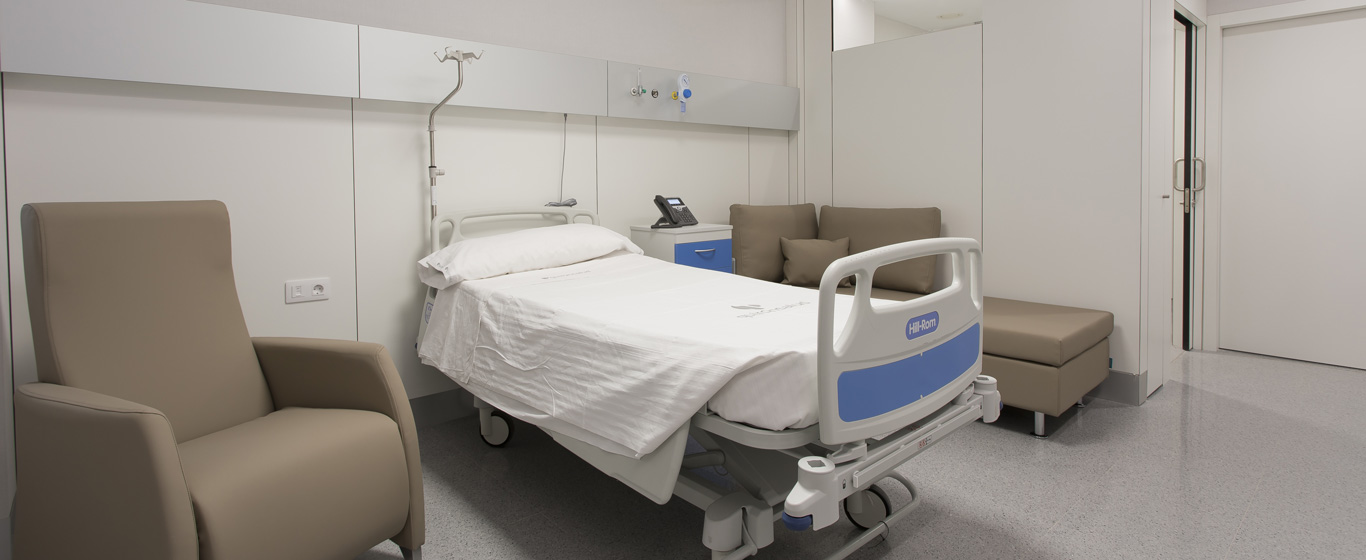X-ray
An X-ray is a procedure used to obtain images of the body using electromagnetic radiation (X-rays). This method can be used both to diagnose and monitor certain pathologies as well as to serve as a guide in surgical procedures.

General Description
An X-ray is a diagnostic test used to obtain images of internal organs. It is usually quick and painless. To capture these images, X-rays (a type of electromagnetic radiation) are emitted through the body and recorded digitally on a computer, although in the past they were captured on film that had to be developed. In some cases, a contrast agent is used to obtain more detailed images.
X-ray images are presented in grayscale. Each structure appears in a different shade, depending on the amount of X-rays it absorbs:
- Dense structures, such as bones, block most of the waves that reach them, so they appear white.
- Muscles, fluids, and fat, which have intermediate density, appear gray.
- Organs containing air, a low-density material, appear black.
- Contrast agents and metals also appear white.
There are three types of X-rays depending on their use:
- Diagnostic X-ray: Helps detect diseases, infections, fractures, traumatic injuries, malformations, or tumors.
- Interventional X-ray: Combines X-ray imaging with a fluoroscope to guide specialists in surgical procedures such as biopsies.
- Follow-up X-rays: Used to monitor the progression of a pathology.
Different techniques can be used to perform an X-ray, which are classified into four types:
- Conventional X-ray: The most commonly used, especially for studying bone alterations. It uses an X-ray emitter and a digital detector (previously, a film was used).
- Digital X-ray: The procedure is similar to the previous one, but images are captured with a digital sensor.
- Fluoroscopy: These are interventional tests that provide real-time images of the body.
- Computed Tomography (CT): Combines multiple images to obtain high-resolution cross-sectional views.
X-rays can be used to study the morphology of various organs in the body. Some of the most commonly used include bone, dental, abdominal, chest, joint, or spinal X-rays.
When is it indicated?
There are many reasons why an X-ray may be performed. Some of the main ones include:
- Bone X-ray: To diagnose fractures, infections, tumors, or bone density loss. It is also used to monitor previous fractures or fissures.
- Chest X-ray: Helps detect conditions such as pneumonia, tuberculosis, chest trauma, pneumothorax, heart failure, blood vessel obstructions, lung tumors, or breast cancer.
- Abdominal X-ray: Determines the presence of abdominal obstruction, stomach perforation, kidney stones, or foreign objects in the gastrointestinal tract.
- Dental X-rays: Help detect cavities, tumors, or bone loss.
How is it performed?
To perform an X-ray, the patient must be positioned between the device that emits the X-rays and a radiation-sensitive plate, which captures the images after the rays pass through the body's tissues. Currently, this plate is digital, meaning the sensors collect electrical signals and immediately create a digitized image.
The position in which the patient must be placed varies depending on the body part being examined and their ability to stand or sit. Generally, for chest X-rays, the patient must stand, while cervical-dorsal X-rays require the patient to lie down.
Risks
X-rays can cause changes in body cells that increase the likelihood of developing cancer in the future. However, undergoing an X-ray does not pose a significant health risk, as the amount of radiation emitted during the test is minimal. For example, the amount of mSv (millisievert, a unit of effective radiation dose) used in a chest X-ray is 0.1, or 1.5 in a spinal X-ray, whereas adults are naturally exposed to 3 mSv per year.
Modern devices emit controlled beams that focus only on the area under study and minimize scattered radiation. Additionally, protective systems (lead aprons) are used to shield sensitive areas such as the reproductive and digestive systems from unnecessary radiation exposure.
Despite advancements, X-rays can be dangerous for fetal development, so risks must be assessed before subjecting a pregnant woman to this procedure. When performed, additional protective measures are taken.
What to expect from an X-ray
An X-ray is an outpatient test after which patients can immediately return to their usual routine.
In cases of contrast-enhanced X-rays, the contrast agent is injected intravenously before imaging begins. This moment may be uncomfortable.
After changing into a gown provided by the medical center, the patient must follow the specialist’s instructions to position themselves in a way that allows for clear imaging. It may be necessary to change position during the test or hold their breath. Regardless of these instructions, the patient should remain as still as possible to facilitate image capture.
During the test, the specialist leaves the room while the patient remains alone in the examination area but is monitored through a glass window at all times.
The X-ray itself is painless, though some positions may be uncomfortable. Each burst of X-rays lasts only a few seconds, although the entire procedure may take up to 15 minutes.
Although radiologists can see the results immediately thanks to digital X-rays, they must analyze them thoroughly to issue a detailed report. The patient typically receives the results in consultation about 48 hours later.
Specialties that request X-rays
X-rays are performed in the radiology department at the request of various specialties, such as Family and Community Medicine, Traumatology, Gastroenterology, General Surgery, Dentistry, Stomatology, Rheumatology, Urology, Oncology, Emergency Medicine, Traffic Units, and Pulmonology.
How to prepare
No prior preparation is necessary for an X-ray, although for abdominal X-rays, fasting or complete bowel evacuation with an enema may be required.
It is advisable to wear comfortable clothing and avoid jewelry or metal objects, as these cannot be worn inside the X-ray room.











































































































